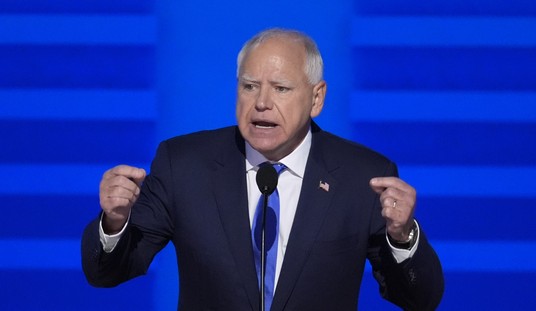
George Mitchell, a son of a goatherd and a brilliant petroleum engineer and entrepreneur, died on Friday in Galveston at the age of 94.
Mr. Mitchell’s role in championing new drilling and production techniques like hydraulic fracturing, or “fracking,” is credited with creating an unexpected natural gas boom in the United States. In a letter to President Obama last year, Daniel Yergin, the energy scholar and author, proposed that Mr. Mitchell be awarded the Presidential Medal of Freedom.
“It is because of him that we can talk seriously about ‘energy independence,’ ” he said. (Mr. Mitchell did not receive the award.)
Mr. Mitchell combined academic training as a petroleum engineer and geologist with a gambler’s cunning to become an influential businessman worth $2 billion. He was a petroleum industry spokesman, then a persistent voice for “sustainable,” or environmentally responsible, economic growth. On 27,000 piney acres north of Houston, he built a town called The Woodlands partly to demonstrate his ideas.
The Times goes on:
Fracking uses water and chemical injections to force more oil from reservoirs. Both the Gas Technology Institute, a nonprofit research organization, and the federal Energy Department worked with Mr. Mitchell, giving him technical help and some financing. He also received federal tax credits.
This deserves some comment.
There has been a considerable effort on the Left to give the Federal government credit for the technical advances that led to the shale boom. The execrable Sen. Al Franken (DFL-MN) recently belabored this point at a hearing of the Energy and Commerce Committee (link; jump to 1:43:45).
I maintain that, while the Federal government played a role, the shale boom would not have happened without insightful entrepreneurs, led by George Mitchell.
Fracking was invented by Halliburton in 1947. Up until that time a commonplace method to stimulate oil wells (to produce at a higher rate), the well would be “shot” with nitroglycerin to crack the rock.
In hydraulic fracturing, hydraulic pressure is applied with pumps until the mechanical strength of the rock is overcome, thereby inducing a fracture. Fluid and sand is pumped into the crack to hold it open.
Millions of wells have been fracked.
As part of Project Plowshare, the effort to find peaceful uses for nuclear energy, the Atomic Energy Commission initiated Project Gasbuggy, an effort to frack a gas well in New Mexico with a nuclear explosion. The resulting gas proved too radioactive to be safely used.
In response to the concern over declining gas supplies, the Gas Research Institute was created in 1976. (GRI was a predecessor to GTI.) GRI was chartered by Congress as an independent industry research consortium due to the lack of significant research efforts among the major gas companies. It was funded with 1.5 cent per mcf levy on any gas moved in interstate commerce.
GRI had an independent management and an industry advisory board. I served on that board for 2-3 years in the early 1990’s. DOE was also served in an advisory capacity. (The Department of Energy had been created during the Carter administration.)
GRI directed research dollars to private firms, to universities and in some cases to the national labs like Los Alamos and Lawrence Livermore. They researched lots of topics; not just production related, but seismic, pipeline and refining, even developing more efficient burners for consumer appliances.
DOE had a production research lab at Morgantown, WV. There they conducted research on fracking and horizontal drilling.
Back to George Mitchell: Mitchell Energy had leased most of Wise County, TX (just west of Ft. Worth) and had producing wells in layers above and below the Barnett Shale. The Barnett always “showed” gas when drilled; Mr. Mitchell knew that if a way could be found to get it out, the potential was virtually limitless.
The point is this: George Mitchell was unwilling to risk many of his own dollars proving that gas could be commercially produced from shale. He was a master at selling the idea to the GRI and DOE and getting them to fund what most sensible people (like me) figured was a cockamamie scheme. We all marveled at Mitchell’s persistence at going after outside sources of money.
An example of how this worked: For the first horizontal well drilled in the Barnett, Mitchell paid the cost of a vertical well, and the DOE paid the incremental cost to turn it horizontal.
I have no idea how many research dollars the DOE spent over the years on horizontal wells and on hydraulic fracturing research. My sense is that the answer is much less than the $535 million DOE pi$$ed away in the “loan” to Solyndra. (If anyone can dispute this, I’ll stand corrected.)
So the Feds can claim credit, in the sense that the guy who figured out that an electron beam could be deflected by magnets is responsible for the television. The shale boom is the result of a successful recipe of a multitude of technologies: horizontal drilling, fluid technology, fracking proppants, coiled tubing techniques, etc. Some of them may have been demonstrated first in government labs, some in universities and some in the private labs of the service companies. All of them were tweaked and perfected in the field, thanks to the willingness of private capital to spend many billions of dollars chasing the prize. To me, that’s where the true credit lies.
The Barnett turned out to be a giant gas field, one of the biggest in the nation. The Marcellus is big, too, plus the Haynesville, the Bakken, the Eagle Ford. But the Barnett will always be The First. Its distinguishing characteristic is that it lay under Wise Co. TX, lands leased by one George Mitchell, the son of a goatherd, master salesman and the Father of the Shale Boom.
[Update: The Times also refers to the tax credits Mitchell received. For a long time, natural gas wellhead prices were subject to Federal price controls. Consequently, once the easy, low cost gas was discovered, supplies lagged. Jimmy Carter instituted the Natural Gas Policy Act in 1978 which remains to this day one of the most convoluted price control regimes ever contemplated. Ronald Reagan largely decontrolled both oil and gas by 1985, but supply concerns remained. Congress established tax credits for certain categories of “unconventional” gas, including gas from “Devonian shale”, low-permeability sandstones, deep gas and coalbed methane. Those credits expired in the 90’s, and contrary to the sloppy language used by many on the Left, they were the last true subsidies received by the oil and gas industry. – SM]













Join the conversation as a VIP Member